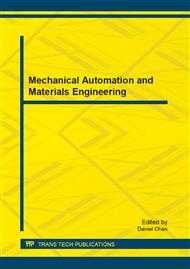p.500
p.504
p.509
p.513
p.519
p.524
p.529
p.537
p.542
Research on Stretching Efficiency of Heavy Forged Shaft Based on Orthogonal Experimental Design
Abstract:
During stretching of heavy forged shafts, there are three major factors that affect the stretching efficiency, including the rotation mode, anvil gap and feed length. Based on the research of model simplification, successive blows and rotation control, a reasonable finite element simulation model is established by the numerical simulation software Deform-3D. The effect of the three factors on stretching efficiency is analyzed by numerical simulation and orthogonal experiment. The results show that the effect of the rotation mode on stretching efficiency is the maximum, and the effect of the feed length is the minimum.
Info:
Periodical:
Pages:
519-523
Citation:
Online since:
August 2013
Authors:
Price:
Сopyright:
© 2013 Trans Tech Publications Ltd. All Rights Reserved
Share:
Citation:


